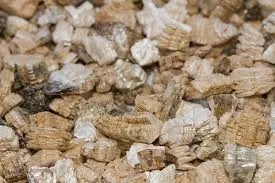Nov . 01, 2024 09:40 Back to list
Choosing Between Perlite and Vermiculite for Optimal Gardening Results
Perlite vs. Vermiculite A Comprehensive Guide for Gardeners
When it comes to gardening and horticulture, the choice of growing media can significantly impact plant health and growth. Two popular options that often come up in discussions among gardeners are perlite and vermiculite. Although they share similar uses in soil amendments, these materials have distinct characteristics that can cater to different gardening needs.
What is Perlite?
Perlite is a volcanic glass that has been heated to high temperatures until it expands and forms small, white, lightweight granules. This process gives perlite its unique structure, which is characterized by its porous and non-compressive nature. Perlite is primarily used to improve soil aeration and drainage. Its properties help prevent soil compaction, allowing roots to breathe more easily and facilitating better drainage, thereby reducing the risk of root rot.
One of the key advantages of perlite is its neutrality; it has a pH level close to neutral, making it suitable for various plants, including succulents and cacti that require well-draining conditions. Moreover, perlite is highly lightweight, making it an excellent choice for container gardening as it does not add significant weight to pots.
What is Vermiculite?
Vermiculite, on the other hand, is a hydrated laminar mineral that expands when heated. This process results in accordion-like, spongy flakes that retain moisture very well. Unlike perlite, vermiculite is known for its ability to hold water and nutrients, making it an excellent choice for improving soil moisture retention.
perlite or vermiculite

Vermiculite’s unique structure allows it to retain a considerable amount of moisture without becoming waterlogged. It also has a neutral pH, making it suitable for various plant types. This characteristic, alongside its ability to provide aeration, makes vermiculite particularly useful for starting seeds and cultivating young plants that require consistent moisture. However, its higher water retention can be a disadvantage for plants that prefer drier soil conditions.
Comparing Perlite and Vermiculite
When deciding between perlite and vermiculite, consider the specific needs of your plants. If you are growing plants that demand excellent drainage, such as succulents or certain herbs, perlite is the preferred choice. Conversely, if you are interested in maintaining moisture levels for plants that require consistent hydration, such as tropical plants, vermiculite is an ideal solution.
Another factor to consider is the environment where you will be using these materials. In potting mixes for raised beds, perlite can help improve aeration and prevent the mix from becoming compacted, whereas vermiculite can support moisture retention, making it suitable for heavy-water-requiring plants.
Conclusion
Ultimately, both perlite and vermiculite play essential roles in modern gardening. Understanding their unique properties and applications can help you make informed decisions that align with the needs of your plants. By combining these materials or choosing one over the other based on specific plant requirements, gardeners can create the optimal growing environment for their beloved plants. Whether you choose perlite, vermiculite, or a mix of both, the result will be healthier, more vigorous plants in your garden.
-
Fe-C Composite Pellets for BOF: Enhance Steelmaking Efficiency
NewsAug.07,2025
-
Eco-Friendly Granule Covering Agent | Dust & Caking Control
NewsAug.06,2025
-
Fe-C Composite Pellets for BOF: High-Efficiency & Cost-Saving
NewsAug.05,2025
-
Premium Tundish Covering Agents Exporters | High Purity
NewsAug.04,2025
-
Fe-C Composite Pellets for BOF | Efficient & Economical
NewsAug.03,2025
-
Top Tundish Covering Agent Exporters | Premium Quality Solutions
NewsAug.02,2025
